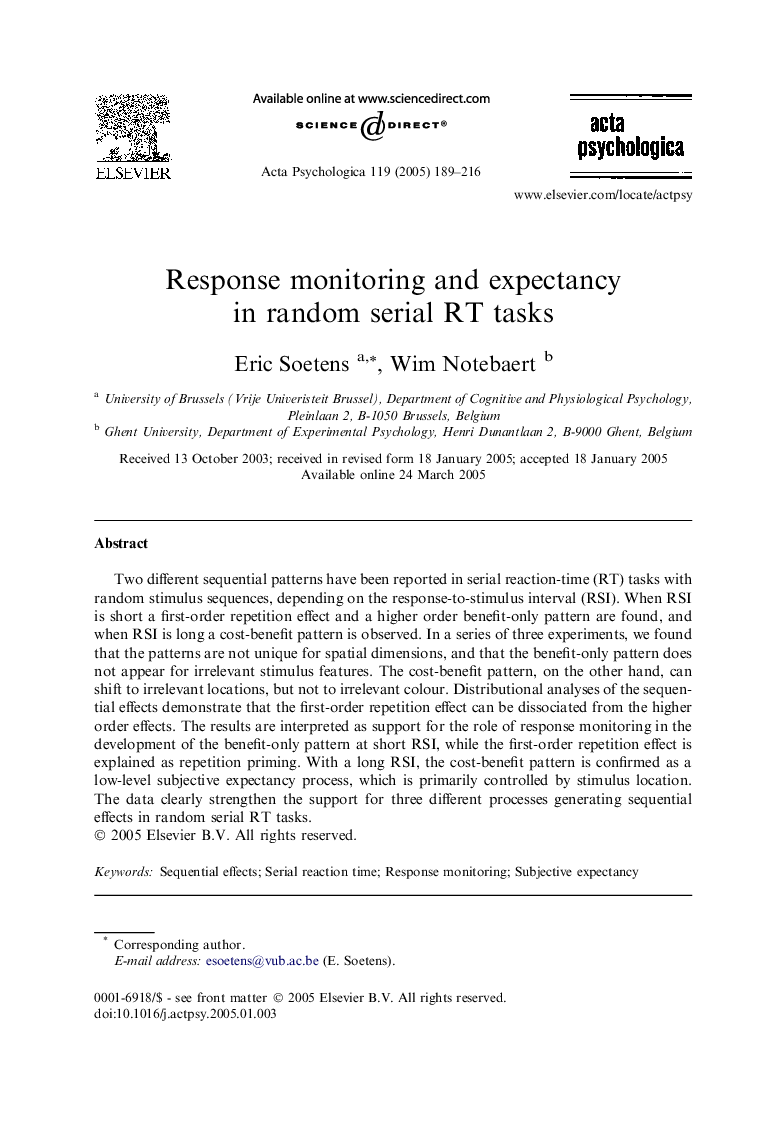| Article ID | Journal | Published Year | Pages | File Type |
|---|---|---|---|---|
| 10453887 | Acta Psychologica | 2005 | 28 Pages |
Abstract
Two different sequential patterns have been reported in serial reaction-time (RT) tasks with random stimulus sequences, depending on the response-to-stimulus interval (RSI). When RSI is short a first-order repetition effect and a higher order benefit-only pattern are found, and when RSI is long a cost-benefit pattern is observed. In a series of three experiments, we found that the patterns are not unique for spatial dimensions, and that the benefit-only pattern does not appear for irrelevant stimulus features. The cost-benefit pattern, on the other hand, can shift to irrelevant locations, but not to irrelevant colour. Distributional analyses of the sequential effects demonstrate that the first-order repetition effect can be dissociated from the higher order effects. The results are interpreted as support for the role of response monitoring in the development of the benefit-only pattern at short RSI, while the first-order repetition effect is explained as repetition priming. With a long RSI, the cost-benefit pattern is confirmed as a low-level subjective expectancy process, which is primarily controlled by stimulus location. The data clearly strengthen the support for three different processes generating sequential effects in random serial RT tasks.
Related Topics
Life Sciences
Neuroscience
Cognitive Neuroscience
Authors
Eric Soetens, Wim Notebaert,
